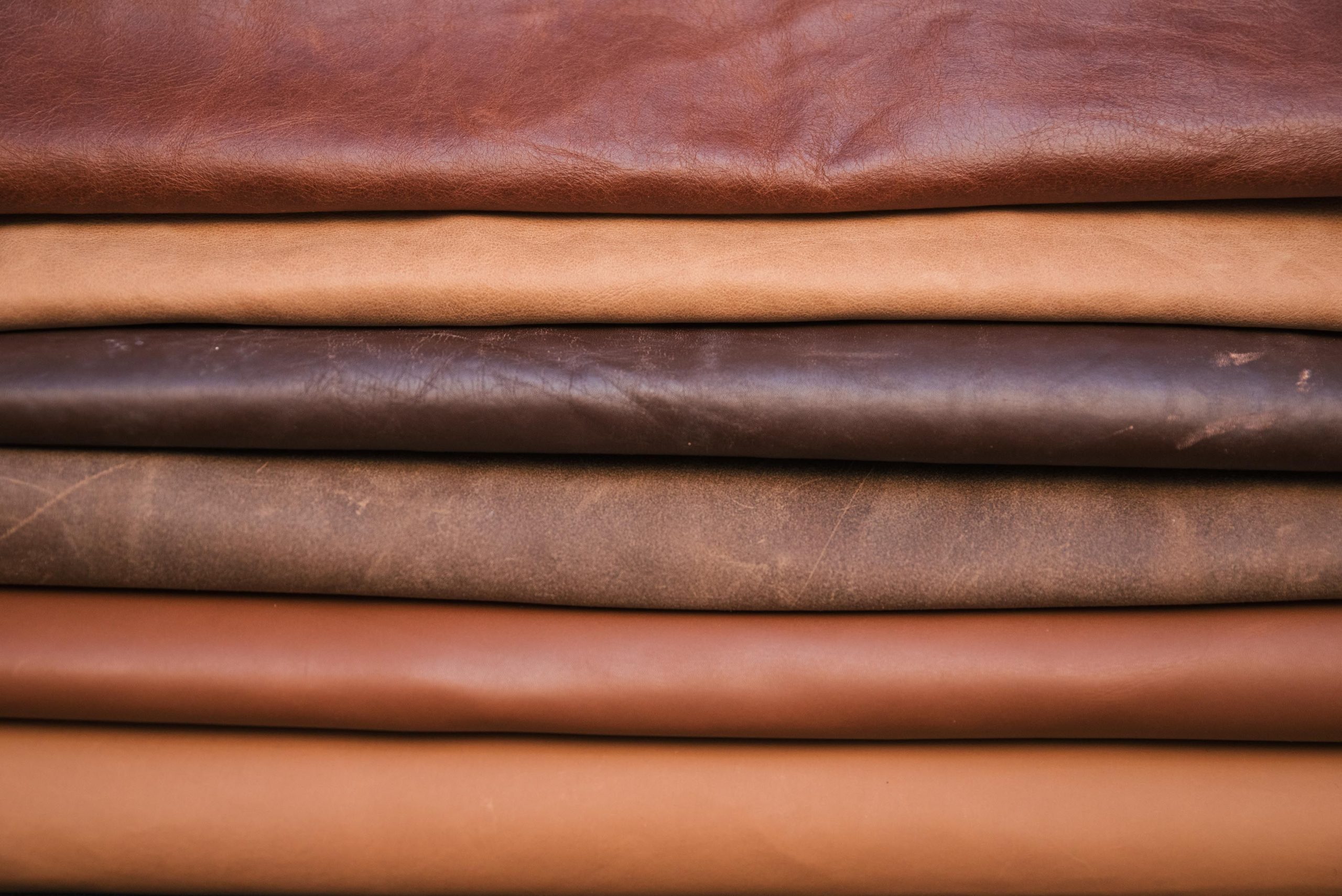The leather market is a multi-billion dollar industry, valued at over $400 billion globally. Leather derived from animal hides, plays a vital role in many sectors from fashion to automotive. Understanding the various types of leather is essential, whether you’re a manufacturer, a designer, or a consumer. Here’s a breakdown of the different categories of leather commonly used in the manufacturing industry.
Full Grain Leather the Undisputed King
Characteristics and Properties
Full grain leather is the uppermost worth leather available. It retains the hide’s natural exterior, including unique markings and imperfections. This leather is amazingly long-lasting and ages wonderfully, developing a rich glaze over time. It holds a significant market share, accounting for nearly 30% of the leather products sold.
Manufacturing Process
The making of full grain leather involves least processing. The hide is tanned and dyed but not sanded down or altered. This preservation of natural grain enhances its longevity.
Real world Examples
Luxury brands, such as Hermes and Rolls-Royce, proudly use full grain leather in their products, including high end luggage and car interiors. This type of leather exemplifies sophistication and durability.
Top Grain Leather A Versatile Choice
Characteristics and Properties
Top grain leather is the second highest quality. It’s smoother than full grain due to a light sanding process that removes imperfections. While it’s still durable, it doesn’t age as gracefully as full grain leather.
Manufacturing Process
Manufacturing top grain leather involves several steps, including sanding and embossing to create a uniform look. This process makes it less expensive than full grain leather while maintaining quality and elegance.
Applications
Top-grain leather is popular in various products, like apparel, handbags, and upholstery. Brands that focus on both luxury and affordability often choose this option.
Genuine Leather: Understanding the Term
Characteristics and Properties
Genuine leather is a term that can cause confusion. It refers to leather made from real animal hides but is typically of lower quality. The variations in quality within this category can be significant.
Manufacturing Process
Genuine leather is often made from split leather, created by slicing the hide into layers. Afterward, it undergoes treatments to enhance appearance and durability. Over 60% of the leather produced falls into this category, making it widely available.
Cost-Effectiveness
One reason for its popularity is affordability. Genuine leather usually costs between 30-50% less than full grain leather. This makes it an accessible choice for many consumers.
Bonded Leather: An Economical Alternative
Characteristics and Properties
Bonded leather consists of leather scraps bonded together with polymers. This blend allows for lower production costs but sacrifices durability and quality.
Manufacturing Process
The manufacturing process involves shredding leather scraps and mixing them with a polyurethane binding agent. This combination creates a synthetic leather look that can be more budget friendly.
Applications
Bonded leather is commonly found in budget furniture, accessories, and less demanding apparel items. While not as luxurious, it meets the needs of cost conscious consumers.
Nubuck and Suede: Specialized Leather Types
Nubuck Characteristics
Nubuck features a sanded surface, creating a soft touch and velvety appearance. This leather is known for its durability and aesthetic appeal.
Suede Characteristics
Suede is similar but has a napped surface, making it exceptionally soft and absorbent. Both types require special care due to their sensitive finishes.
Applications and Care
Nubuck is perfect for shoes and jackets, while suede is well-liked in bags and furniture. Proper care includes regular brushing and using protective sprays to maintain their appearance.
Patent Leather: A Shiny and Unique Finish
Characteristics and Properties
Patent leather is famous for its glossy finish, giving it a distinctive look. Its shiny surface is created through a unique coating process.
Manufacturing Process
To achieve the shine, patent leather is coated with a layer of polyurethane or varnish. This added finish not only makes it visually striking but also adds some level of water resistance.
Applications
You will find patent leather in fashion items like shoes, bags, and accessories. Its shine makes it a favorite for formal wear and children’s products.
Conclusion Understanding the different types of leather can greatly influence your purchasing decisions. From the finest full grain choice to the reasonable bonded leather each type offers exclusive benefits and applications. Whether you are a consumer looking for quality or a manufacturer aiming for cost-effectiveness, knowing these distinctions helps in choosing the right leather for specific needs. Keep this guide handy to navigate the rich world of leather with confidence.




